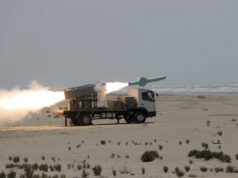 is
is
It never ceased to amaze me how a single person operating out of abject squalor in a fourth‑world country could wreak so much havoc on his fellow man, but I saw it time and time again. Saleh Ali Saleh Nabhan was number three on the FBI’s most wanted list. In 1998, he was involved in the planning and execution of the U.S. embassy bombings in Dar es Salaam, Tanzania, and Nairobi, Kenya, that left over 250 people dead. Later, in 2002, Nabhan was responsible for orchestrating suicide attacks on the Paradise Hotel in Mombasa that killed three Israeli tourists and ten Kenyan workers, injuring eighty more. During that same operation, two of his men attempted, unsuccessfully, to shoot down an Israeli charter plane.
U.S. and allied intelligence had been hunting Nabhan since 1998, but his tradecraft was exceptional. Nabhan never used any technical device, a phone, or computer. He rarely stayed in one place for more than twenty‑four hours, and he always used couriers or cutouts to ensure some separation between himself and a potential threat. It was also helpful to Nabhan that after 9/11, our intelligence focus shifted from tracking a terrorist like him to more notable threats like bin Laden, Ayman al‑Zawahiri, and Zarqawi.
However, by 2009 the threat of Al Qaeda had metastasized. Terrorist organizations like Al-Shabaab in Somalia had aligned themselves with bin Laden and were attempting more global operations to expand their brand. Saleh Nabhan once again became relevant. The Secretary of State, Hillary Clinton, seemed somewhat unsure of my answer. “So, how many operations like this have you conducted?” she asked. I thought for a moment, paused, and looked at the still frame of the video frozen on the screen in the White House Situation Room.





